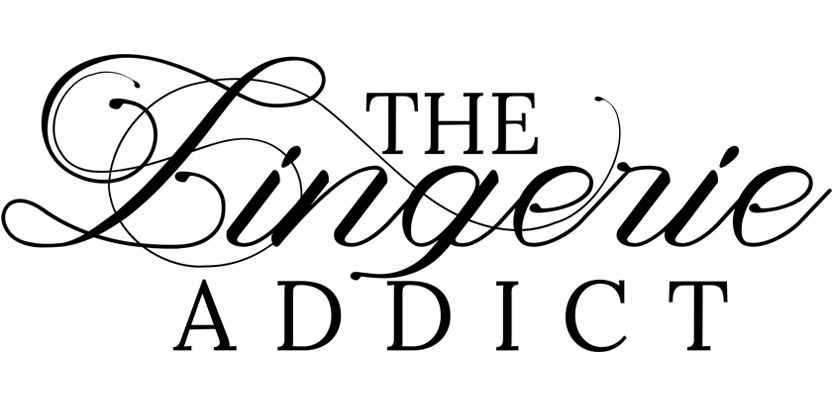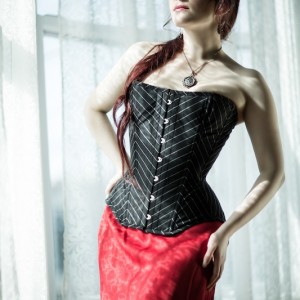What's Up With Upside Down Corsets?
The corsetry community can be a pedantic bunch. I say this unironically, I know that I am also guilty of a certain degree of pedantry as a corsetmaker --- one need look no farther than What (You Didn't Know) to Look for in a Corset to see the evidence as I obsess over pattern matching at the center front. We all have our pet peeves. One thing that often gets the blood of corset aficionados boiling is corsets worn incorrectly, most notably when they are upside down in photoshoots. How can you tell if a corset is upside down? Why is it so bad? Is it ever appropriate to wear a corset upside down? Stay tuned to find it. Disclaimer: this article will feature no photos of upside down corsets. Let's not give folks the wrong idea, shall we?
How to tell if a corset is upside down:
One of the easiest, yet most potentially misleading indicators, is the direction of the busk. Corsets typically fasten (like most western womenswear) in a right over left fashion. The loops of the busk should point to the wearer's left. If the loops point the right, the corset may be upside down, but it's also possible that the busk was inserted backwards or (if looking at a photo rather than live reference) the image may have been mirrored in photoshop for some reason. Overbust corsets often have a dead giveaway: not only will the waist of the corset be up on the rib cage, but there will be "cups" for the bust and often a sweetheart neckline over the hips. The "top" of the corset will point upwards towards the pit of the throat instead of cutting straight across or delicately dipping down to expose decolletage.
If you want to double check as you put on your own corset, check that the busk loops are on your right and the buttons/studs on the left; that the corsetiere's interior tag (if any) is oriented upwards; and that the knot that closes off the ends of the lacing is at the bottom. While each corsetiere may have their own construction quirks, this gives you a pretty solid starting point if you can't tell from muscle memory of a giveaway of the design.
What's wrong with upside down corsets?
Well, the major problem with wearing corsets upside down is that, usually, they really just don't fit well anymore. They're put on this way by people who are just confused and don't know any better. They haven't worn them enough to know what they're supposed to feel and/or look like. This is one of the many reasons why good corsetieres are wary of loaning out their samples for photoshoots, especially with an unknown team. It's not improbable that the photographer, model, and stylist will all be equally clueless. Corsets worn upside down look downright weird to an informed observer and are probably downright uncomfortable for the model in question. Design elements may not work as well when flipped upside down. From a client perspective, wearing your corset upside down may inadvertently misinform your opinion of corsetry since your corset will look and feel different (and probably not for the better).

© Joel Aron | Model: Dwoira Galilea | Corset: Dark Garden
Any circumstances under which it is acceptable to wear a corset upside down?
Actually, yes. If a corset honestly fits not only better, but fits well, when worn upside down, then there's no reason for it not to be worn that way. This is generally applicable only to underbust styles. All bodies are different, so a corset cut with a particularly wide rib and narrow hip may fit one person (perhaps a male corset wearer) perfectly well right side up, and fit a different body type (for example, an athletically built woman) just as well when inverted. One argument I've seen for this being unacceptable is that all corsets "should" be custom, which is patently untrue. Don't forget that in the corseted heyday of the Victorian era, corsets were commonly mass-produced. For photoshoot purposes, it can be a major challenge to create a custom corset. The bigger the shoot (and the reputation of the team), the harder it is to arrange fittings with models, and if it's for a major publication, the model (and/or designer) may not even be booked in time for a corset to be made. Designers generally keep a library of samples from their personal collection and previous shoots and collections, the latter of which are made in semi-standard sizes. These samples and personal corsets are what get loaned out, usually. So if a sample fits a model better when worn upside down, it is not only a serviceable option, but may have been the only option under the circumstances.
What are your corsetry pet peeves? Let it out, and share them in the comments below.










